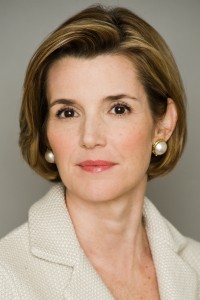 March is Women’s History Month, which gives us even more of a reason to recognize powerful women, both past and present, who continually inspire us to move forward. Regions, a bank that features a Women and Wealth initiative to educate, equip and empower women, is celebrating Women’s History Month by honoring the contributions of women who have made a difference in countless facets of life.
March is Women’s History Month, which gives us even more of a reason to recognize powerful women, both past and present, who continually inspire us to move forward. Regions, a bank that features a Women and Wealth initiative to educate, equip and empower women, is celebrating Women’s History Month by honoring the contributions of women who have made a difference in countless facets of life.
From media entrepreneurs to leaders impacting their own communities, we can learn from these women’s successes and apply their knowledge to improve our own careers and lives. Here are some key examples of inspirational leaders and their advice for reaching – and exceeding – your goals:
Develop Your Leadership Skills with a Mentor
As the president and CEO of Big Brothers Big Sisters of America, Pam Iorio is a shining example of women leaders who are making a difference in their own communities and beyond. Her gift for leadership shows not only through her work with Big Brothers Big Sisters, but also in her past career as Mayor of the City of Tampa and her tenure as leader-in-residence at the John H. Sykes College of Business at the University of Tampa. The author of Straightforward: Ways to Live and Lead, Iorio delivers a strong message about the importance of developing leadership skills. Her message: Learn to lead yourself well so you can, in turn, lead others.
Regions Bank commends Iorio’s work to change communities across America through the power of mentoring and recognizes that career-oriented women can grow and learn from this inspiration. One way women can develop their own leadership skills is by cultivating a relationship with a female mentor
Define Your Personal Brand
Wendy Lane Stevens, the founder and president of national public relations firm LANE, advises women to spend time developing a personal brand that reflects your core beliefs. Every day and in nearly every situation – board meetings, conversation with clients, coffee with girlfriends – your personal brand is on display through your actions, words and decisions. It’s never too late to create a personal brand or modify your current one. Stevens suggests these steps:
Brainstorm and write down 30 to 40 words that describe who you are and the traits you like about yourself or want to improve. After thoughtful consideration, narrow the list to about six words.
Compare your descriptions to the words that three of your role models would use to describe themselves. Use this as a gauge to refine your list.
Ask a family member or close friend to review your words. Are they aspirational and achievable? “You want these words to be authentic and transparent, so you want honest feedback,” Stevens says.
Use the words to develop an elevator speech that describes who you are and what you believe – this becomes your personal motto. Keep it near you – like on your computer or on your phone so you’re constantly reminded of your core values or brand.
Every several months, grade yourself on how you’ve integrated your values and brand into your life.
No matter what your profession, you can glean valuable insights from smart, successful women all around you, including all of the powerful females Regions Bank is recognizing this March. If you’re interested more career insights and guidance for women in the workforce, Regions has shared with us some additional resources:
For Entry-Level Women – Learn How To Budget After Landing Your First Job. When you’re starting your first job, it can be difficult to learn how to budget your money. Regions shares four tips to help you separate your wants from your needs and set yourself up for financial success.
For Female Business Owners – Learn About, and Leverage, the Resources Available to Women and Minorities in Business. The government helps foster growth for women and minority business owners in part by offering tax breaks to companies that work with these businesses. Make sure you thoroughly understand these programs, and take the steps necessary to qualify for them.
For Moms in the Workforce – Balancing Career and Home. When it comes to work/life balance, find the right fit for you rather than an equal balance.
This article was sponsored by Regions Private Wealth Management.









